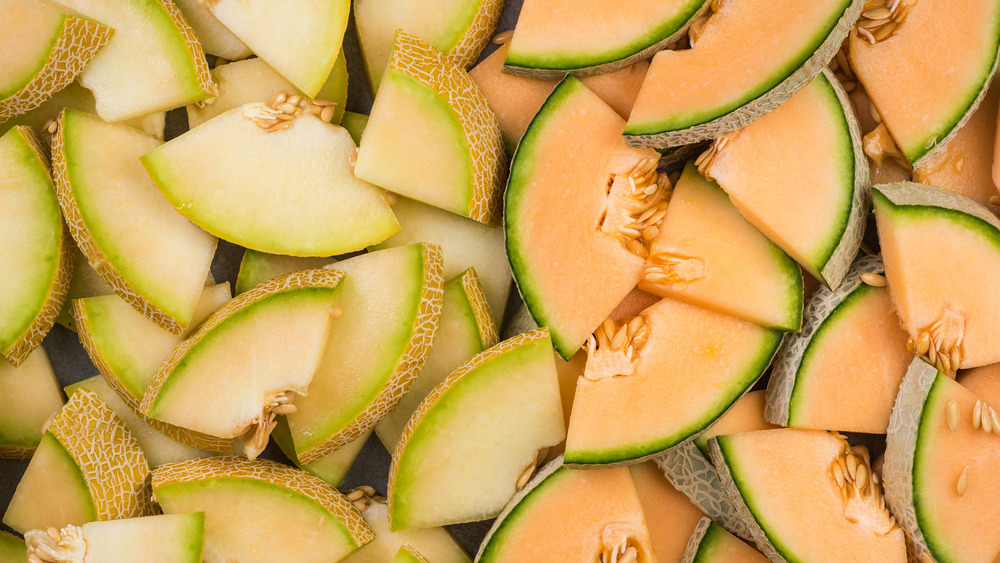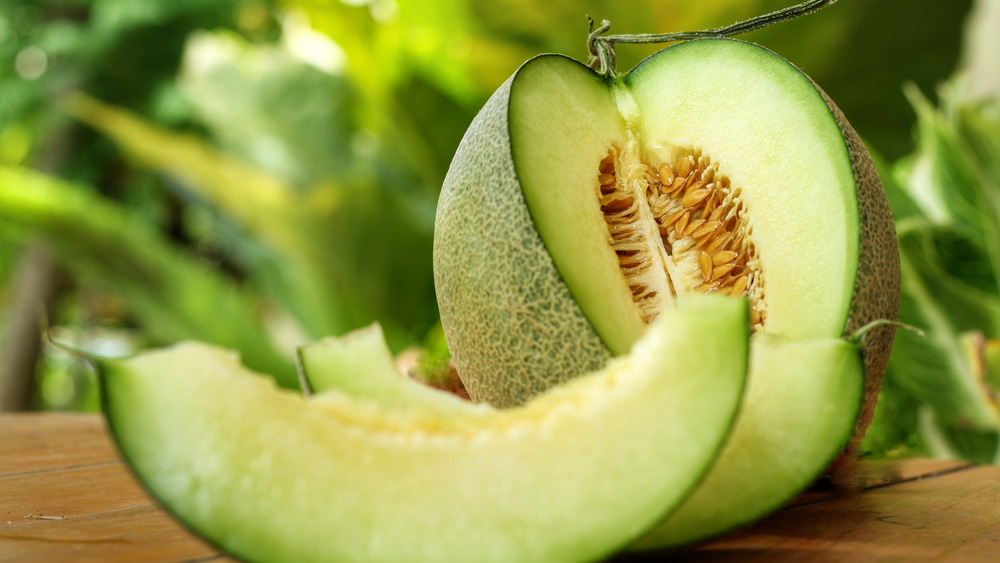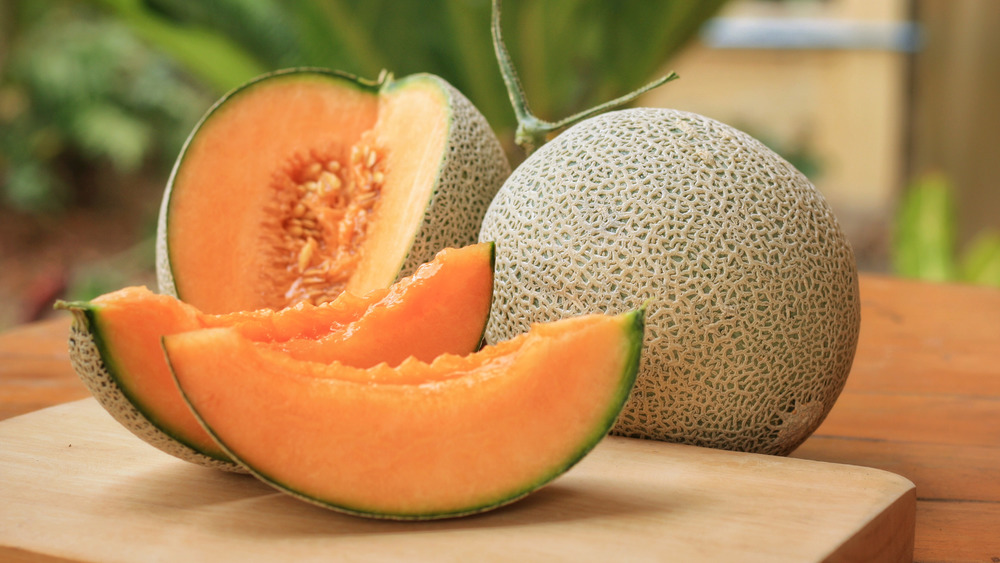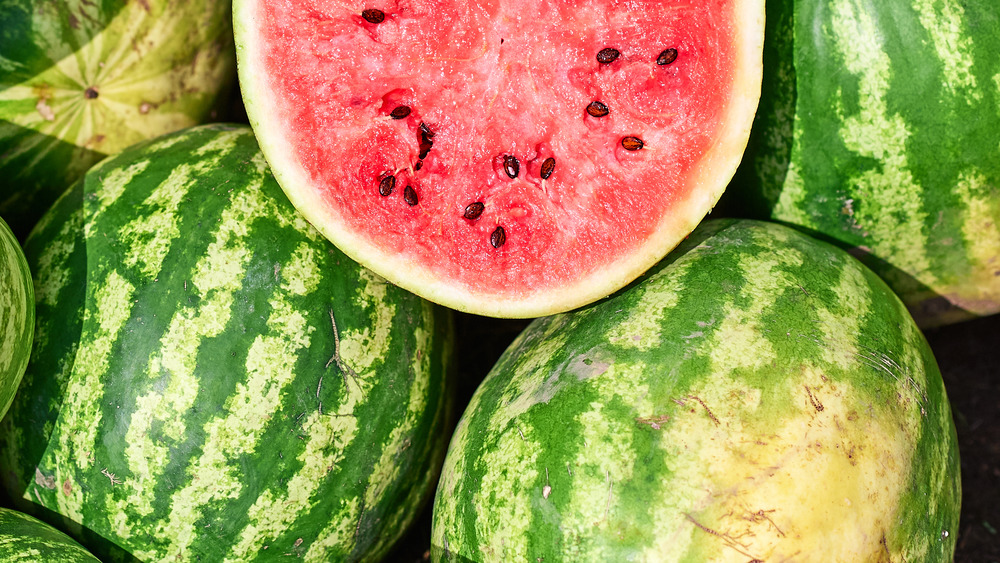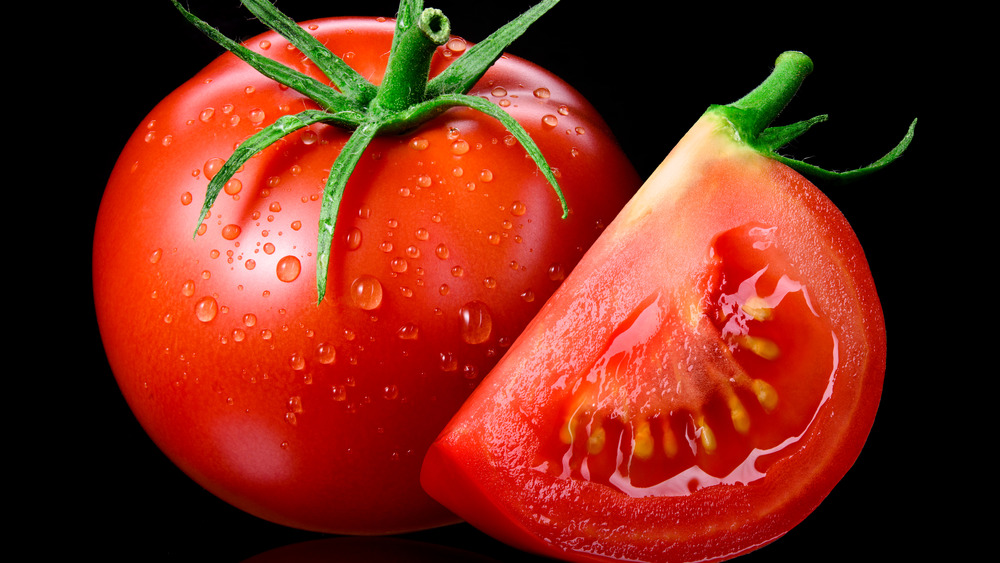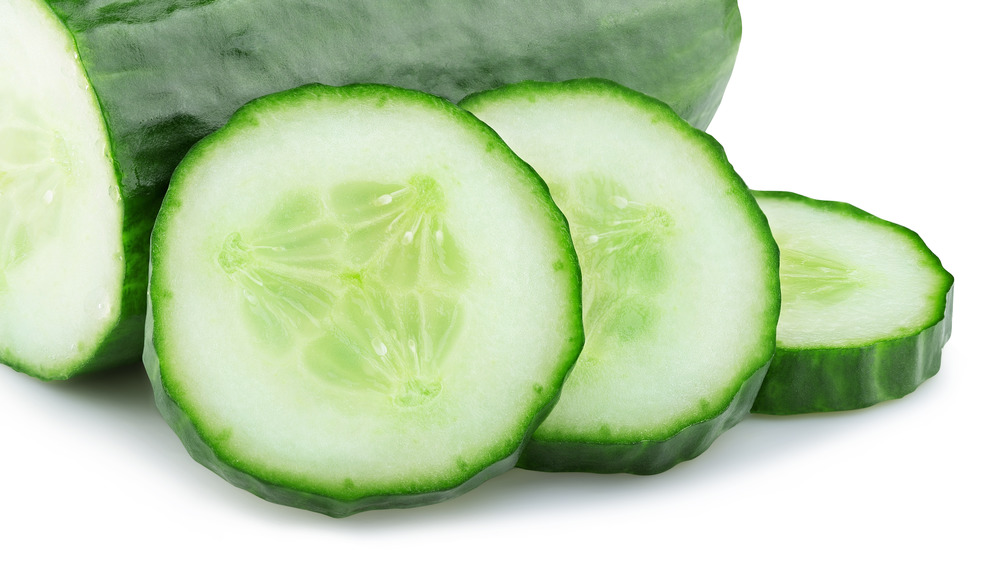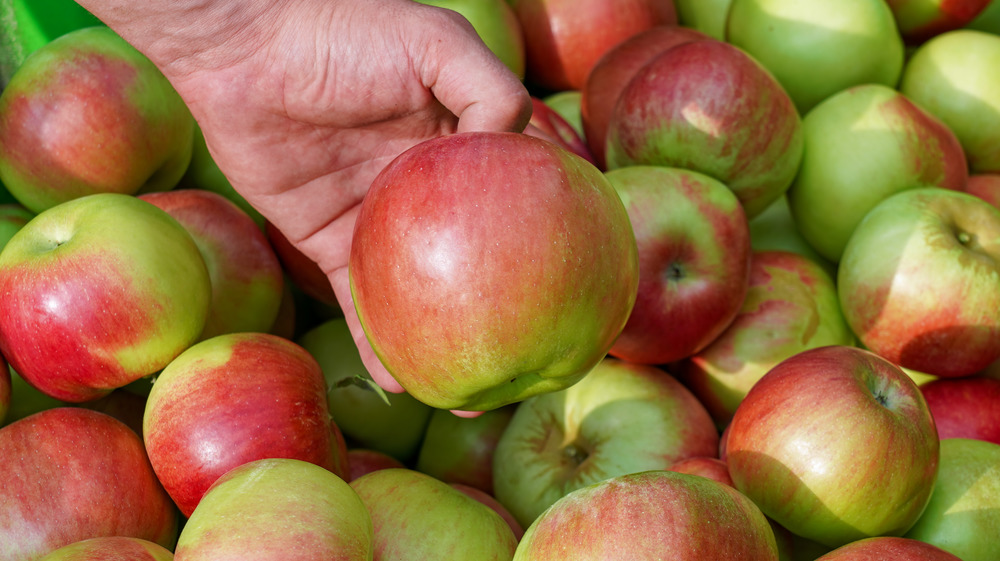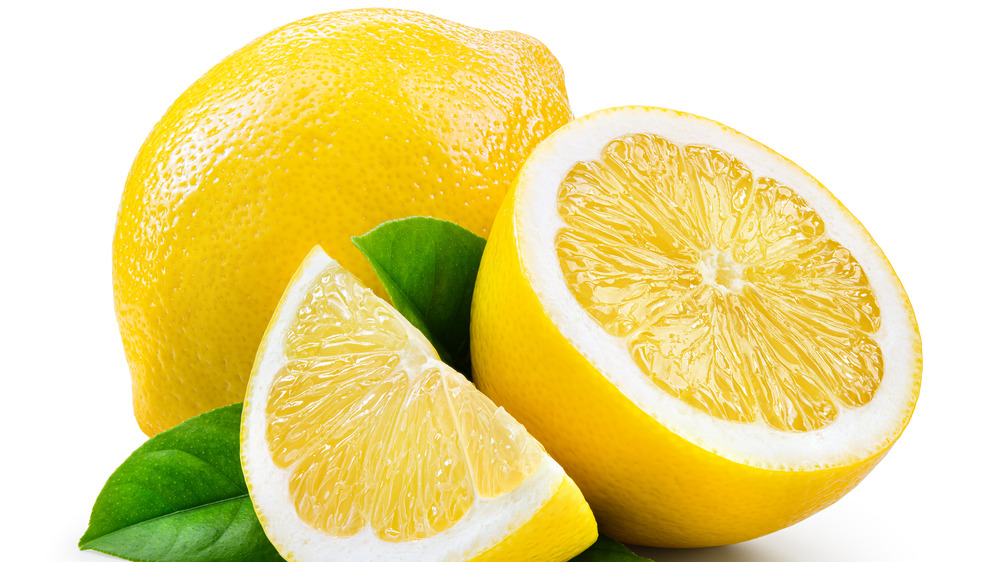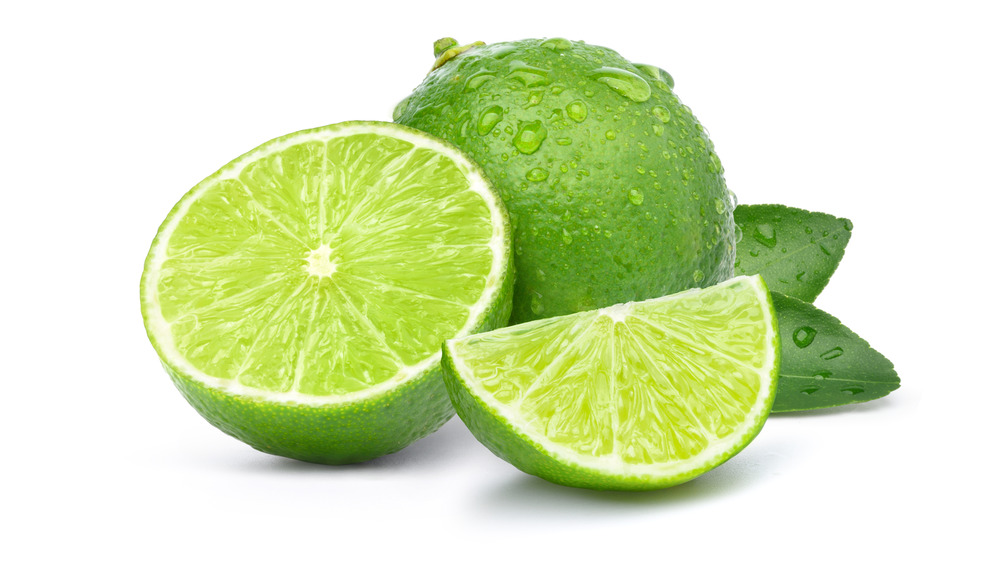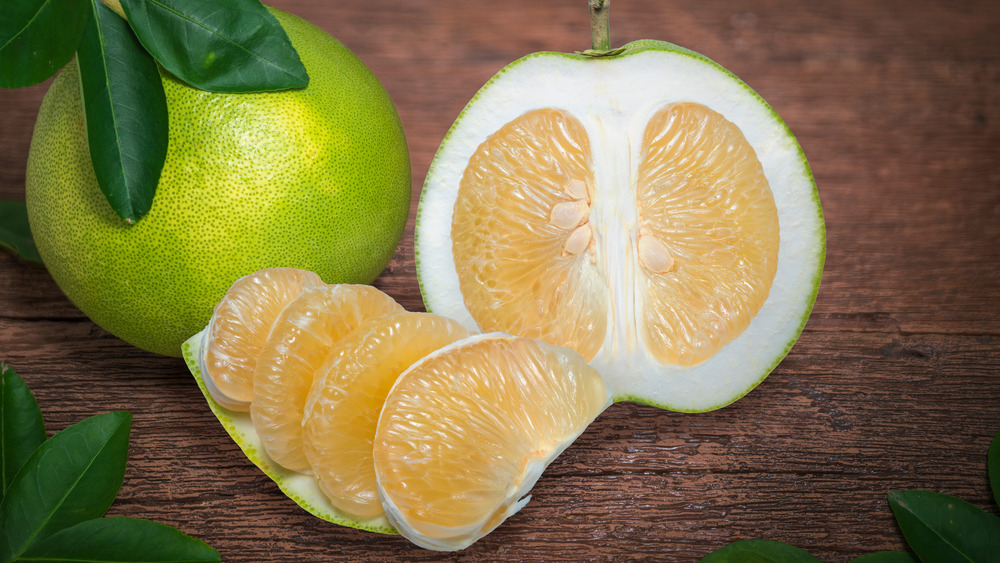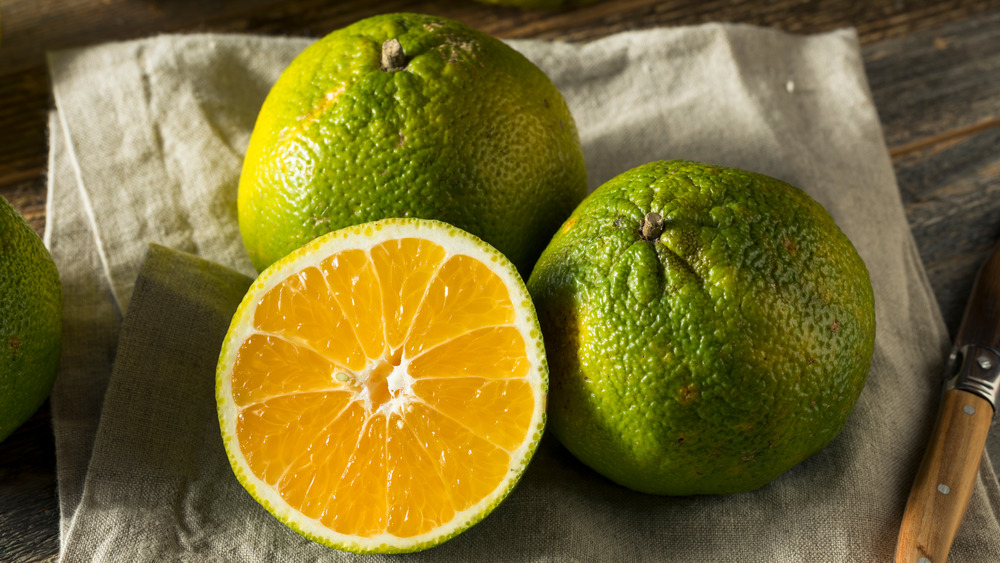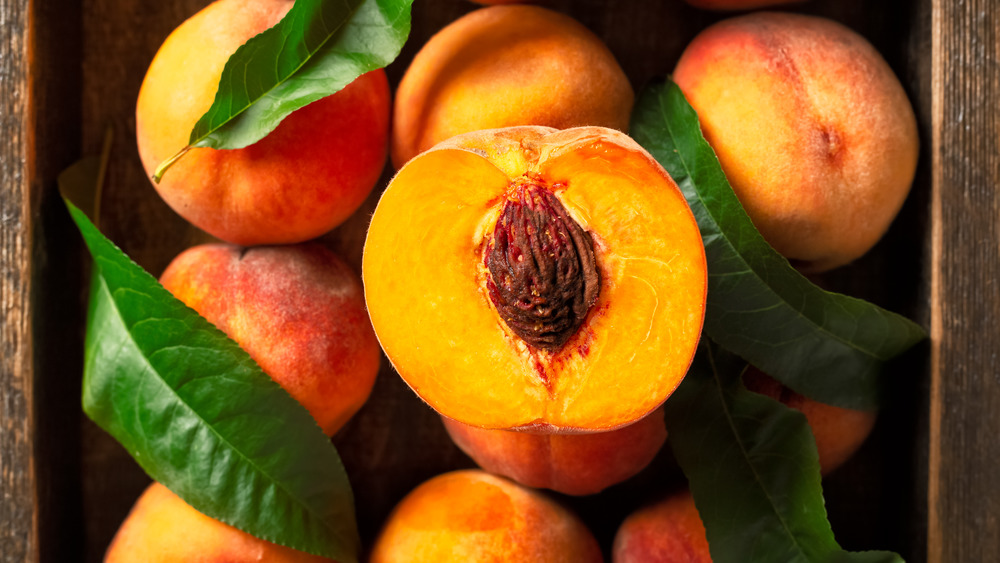Fruits You Should Absolutely Never Freeze
We may receive a commission on purchases made from links.
There's a time and place for mushy fruit (and we do love banana bread), but there are some things that just shouldn't be frozen and thawed before eating. That's not to say you can't blend frozen chunks of melons or even apples into smoothies, or thaw and juice them for a low-effort power breakfast. But let those ingredients thaw 30 minutes at room temperature instead of five or 10, and they'll turn to mush. Your banana "nice cream" turns into a luge and your watermelon cubes turn into a slippery, soggy mess.
What makes a fruit good for freezing? Its water content and structure. Mangos lose some of their shape, but don't differ so much from their fresh counterparts, which is why they're not on this list, but most members of the melon and citrus families collapse completely. Whether or not you should freeze or buy imported frozen fruit is a whole other issue. That being said, knowing what fruit you should and shouldn't freeze and how to use it at its best can yield delicious results. Here's what you need to know about the fruits you shouldn't be freezing.
If you're freezing honeydew melon, be sure to chop it up
Honeydew melon has a high water content, which means it'll turn to mush when thawed completely (via Self). So, if you're planning to put melon out on a cheese tray or wrap it in prosciutto, you should never freeze it first. But, if you chop the fruit up fresh and freeze it in chunks, those chunks will make for a super creamy snack or dessert when you leave them out of the freezer for about 10 minutes. Set a timer, though, because if 30 minutes pass, they'll be a soggy mess.
The frozen chunks also make great smoothie additions or simple three-ingredient sorbet with maple syrup or honey, but you'll be missing out on that satisfying, juicy bite of a fresh sun-ripened fruit. If you do have to freeze your melon, freeze it in bite-size chunks, then blend it with other overripe or very sweet fruit like bananas or mangoes to make a smoothie. Or, blend it with sugar syrup and freeze the puree in popsicle molds.
Cantaloupe can turn into a mushy mess
Just like honeydew melon, cantaloupe's fibrous structure breaks down when the fruit is frozen and thawed. Now, if you're gifted the king of melons by a generous friend at some point and happen to be leaving town immediately, assuming you can't take the fruit with you, your best bet is to peel, de-seed, and chop up the cantaloupe immediately and freeze the fruit in freezer bags or freezer-safe containers.
You can do all the same things with it as you would with frozen honeydew, but you'll be missing out on one of the most luxurious fresh melon experiences of your life. If you have an average cantaloupe on hand, or an under-sweet one, freezing it might actually make it better, as freezing the chunks concentrates their sweetness. If it really needs some extra help, flavor-wise, though, the best option might be to coat it in maple syrup, honey, or another sweetener before freezing.
Make smoothies out of watermelon instead of freezing them
Have you ever bought an entire watermelon and noticed that it was getting a bit overripe before you'd even gotten halfway through eating it? What can you do with the fruit before it goes bad? You could freeze it, but thawing the frozen flesh results in pretty much the same mushy texture as leaving the fruit to over-ripen in the fridge, which is what you're trying to avoid in the first place.
So, your best options are to make smoothies, popsicles, or sorbet, just like with honeydew melon and cantaloupe. An extra-sweet watermelon also makes wonderful granita without the work of making and cooling a sugar syrup as you would for less naturally sweet fruit. Or, try using a melon baller to scoop spheres of the fruit onto a baking tray, then freeze the balls for DIY ice cubes, much like frozen grapes (which require even less work).
Tomatoes can be frozen, but only if you're cooking with them
Officially a fruit, tomatoes might be the worst things to freeze. The only exception is if you're making tomato soup, sauce, or cooked salsa, in which case freezing them can be a whole lot less work than canning them. Anything you're going to cook and puree will be just fine when thawed, but don't think you're going to make an exceptional gazpacho or pico de gallo with thawed tomatoes. The results just won't have the same scoop-ability (not a word, we know, but it should be). Then there's the whole issue of having to remove the tomato peel before freezing, which makes for a ton more work unless you have a food mill.
If you do have a food mill that can remove skins, freezing tomatoes can actually help save time, as the high-water fruit will collapse similarly to being blanched when thawed, without the potential burn marks on your skin. Even better, if you have a high-powered blender, there's no need to blanch the tomatoes first for sauce anyway, so freeze away!
If you have to freeze your cucumber, use it in a drink
The cucumber, a member of the melon family (and, like tomato, also officially a fruit), might not be as sugary as honeydew and cantaloupe, but it still acts the same way as its Cucurbitaceae siblings. It's a great addition to a green smoothie or juice, and freezing it can help break down its fibrous membrane for those purposes. But thawing the fruit to eat raw will turn it into mush, with none of the sweetness of its melon counterparts.
If you do have to freeze cucumbers to keep them from being wasted, blend the peeled, frozen chunks with a little gin and sugar syrup for a frozen gin and tonic, a perfectly refreshing happy hour drink. Just top it up with tonic or sparkling water to taste. Or, if you happen to have some mint on its way out, blend it with the frozen cucumber as well as white rum and your sweetener of choice, then freeze the purée in popsicle molds for a ready-to-eat, adult-friendly treat.
Apples won't be crunchy after freezing
If you have a bunch of cut-up apples in the fridge, they won't last long before they start to turn brown from exposure to oxygen. So, it's tempting to chuck them in the freezer and thaw them as needed for snacking.
Unfortunately, those apple slices will be far from their fresh-and-crunchy initial states. If you thaw frozen slices for about 10 minutes or so, they'll be tasty sweet-and-sour snacks, but much longer, and they'll be mush. If you do over-thaw them, all is not lost. The thawed fruit is good for pies and applesauce. In fact, they're also perfect for a no-cook applesauce.
If you like your applesauce chunky, just let the apple slices thaw a bit, add honey or sugar and lemon juice plus a dash of cinnamon, then mash them with a fork. To make a smoother, cooked sauce, peel the apples before freezing and let them thaw a bit longer before heating them with spices, sugar, and lemon and then blending by hand or with a blender or food processor.
Try preserving your lemons
If life gives you fresh lemons (that you let sit in your fridge a few days too long and don't feel like making lemonade), you might be tempted to freeze them. But frozen lemons don't thaw well. One exception to the rule is if you're planning to add them to a glass of water as a form of a lemon ice cube, but even then, it's smarter to zest the lemons first and freeze those in strips for stews, soups, or rice and then juice the remaining lemons and freeze the juice in ice cube trays, because those make for nicer, non-chunky water seasonings.
Alternatively, you can make your own preserved lemons by salting them and leaving them in the fridge for a few months, then using them for slow-cooked North African tagine dishes, couscous, rice, and even lentils. If you happen to have a dehydrator, save the freezer space by dehydrating fresh slices of lemons for drinks.
Zest your limes instead of freezing the whole fruit
Just like lemons, limes don't retain their original shape when thawed, so zest them and juice them and stick those high-flavor items in freezer-safe bags or ice cube trays (then transfer the frozen cubes to freezer-safe bags or containers) instead of freezing the whole or sliced fruit. You can use lime zest wherever you'd use lemon zest, just with a more floral result. The zest also makes a great addition to chilies, mashed yams with honey, and even mojitos.
Frozen zest will keep for about three months. Dehydrated lime slices will keep much longer and add a puckering tang to cocktails and sweet potato soups. Frozen zest or dehydrated slices can also substitute for lime leaves in Thai green curries, and they can pump up the flavor of lemon juice or lime juice in summer-sweet sorbets and ice creams. Love key lime pies? No need to buy fresh limes when you have freshly squeezed zest and juice in the freezer. So stick with zest and juice instead of whole frozen fruit.
Grapefruits turn rock-hard when frozen
Just like lemons and limes, grapefruits won't have those juicy membranes when you thaw the frozen fruit. They're sweet-and-sour treats when partially thawed, but let them go too long, and you're left with mush. That's fine if you're making a smoothie or want to juice the pulp, but there's no use freezing the whole fruit unless you want a rock-hard, softball-sized garnish for a birthday cake. And even then, you're probably better off sticking to candy bars and other treats that won't melt, deflate, and ooze tangy juice all over your masterpiece.
So, like lemons and limes, dehydrate your grapefruit slices or freeze the pectin-rich peel, then juice the fruit and freeze it in ice cube trays that can be blended easily into smoothies, cocktails, mocktails, and desserts. The bitter skin is great for infusing sugar syrups and tonic syrups. A lot of recipes call for you to avoid the bitter white pith, but that bitterness can be delicious in sweet recipes or masked in smoothies and is a good source of fiber.
Like grapefruits, you can't freeze pomelos
Pomelos are large citrus fruits that are juicy, usually sweeter than grapefruit, and easy to peel. Like limes, which are a little more floral than lemons, you can think of pomelos as a little more floral than grapefruit, though, like grapefruit, they come in pink-and-yellow-flesh varieties. But other than that, anything you can or can't do with grapefruit, you can or can't do with a pomelo, and the same applies to not freezing and thawing it. Those juicy sections will deflate like a popped balloon when you leave them to thaw for too long. So stick with smoothies, juices, syrups, and dehydrated slices, and if you really want to freeze the fruit, zest and juice them first.
To freeze whole pomelo pieces, it's best to freeze them in a sugar syrup that will help them keep their texture when thawed. Plus, there's the added bonus of having pomelo-flavored syrup when you're done, which is delicious with or without rum and refreshing with just sparkling water.
Ugli Fruit
Ugli fruit is a cross between an orange and a grapefruit and is not to be confused with ugly fruit, a.k.a. fruit that's a little past its prime and should definitely be frozen immediately to keep it out of a landfill and preserve it at its sweetest (fun fact: fruits like bananas and mangoes have their highest amounts of sugar once black spots develop). They're also referred to as Jamaican tangelos and can sub for either of their parents in recipes. The fruit might look a little wrinkled, but the inside is delicious when ripe, and the outside is ideal for zesting. Use it in place of lime zest, grapefruit zest, or orange zest and freeze it as you would any of those.
Avoid the thick white pith, though, which can be bitter, unless you like that fibrous bitterness and want to add it to smoothies where the bitterness will be balanced by other sweet fruit. Like other citrus, if you want to freeze whole pieces of the fruit, it's best to do that in sugar syrup. It's particularly useful to preserve it in syrup if the fruit has been picked under-ripe, since it won't ripen after being harvested.
Any imported fruit that grows locally
The carbon footprint of transporting frozen fruit is huge. Even if it costs less to produce the fruit in a foreign country or faraway area, the non-reusable packaging and the refrigerated shipping adds up. So you definitely should never freeze imported fruit that you can buy locally, so long as you have ample freezer space. Instead, it's best to buy in bulk when local fruit is in season and freeze it in slices or syrup in freezer bags or containers, then thaw or use as needed. Why not just eat everything fresh, whether it's imported or not?
Food waste is a huge cause of greenhouse gasses, so you're actually less likely to waste the fruit if you freeze it than if you leave it sitting in your fridge. If you don't have a lot of freezer space, freeze as much as you can, because a full freezer will use less energy than a half-empty one, and freezing your own local fruit in season will still be more environmentally friendly than buying imported frozen fruit. By freezing local fruit, you'll save a year's worth of fridge food waste, using forgotten-about peaches, plums, and cherries – fruit that actually does well when frozen.
